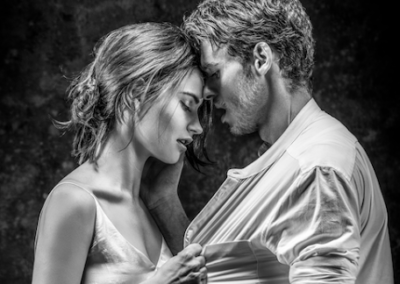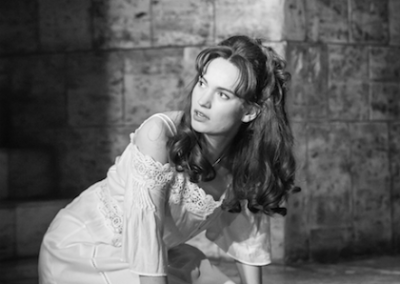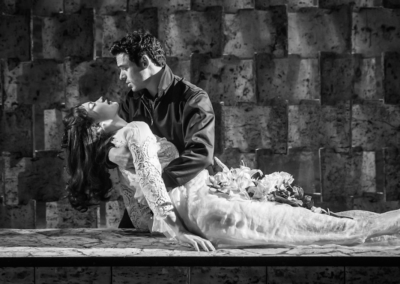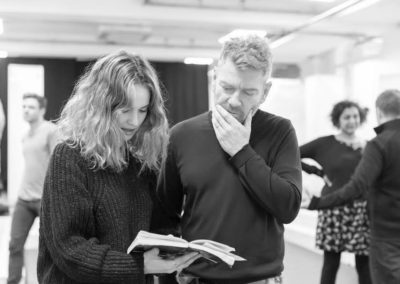Romeo and Juliet | Kenneth Branagh Theatre Company
With an all-star cast from both television and the Shakespearean stage, Kenneth Branagh and Rob Ashford’s Romeo and Juliet is an evocative exploration of the violent undercurrents masked beneath daily life bursting free.
With a director and three lead actors coming off the back of their collaboration in Cinderella, their roles have a natural ease in their interactions. Lily James conveys the energetic youth of Juliet while also making her seem much older – this is not the blossoming young women of the Elizabethan age, but instead the vibrant and independent teenager from the era that inspires the production. She is both hilarious and endearing, smuggling a bottle of wine from the party and collapsing in hiccups at the thought of her upcoming marriage.The strength of Richard Madden’s Romeo lies in his reactions, both as an amused observer and in his growing awareness of his own tragic fate. Even within the despair of his final scene he has a frantic fear of death almost able to compete with his grief, causing a cruel glimmer of hope as he almost fights against the tragedy about to unfold.
Derek Jacobi’s Oscar Wilde inspired Mercutio is a delight whenever he’s onstage, bringing a jovial eccentricity to the role. With his age setting him more apart from Romeo than his own house’s neutrality, it heightens the tragedy that extends beyond the Capulet and Montague youth and resonates through the whole of Verona: no one is safe, and all are punished. The fascinating age reversal is continued with Samuel Valentine’s young Friar Lawrence. Acting as more of a brother than a father figure, it adds further warmth and humour to their earlier scenes, along with a vulnerability as he masks his deceit from the house elders to protect the young lovers.
It heightens the tragedy that extends beyond the Capulet and Montague youth and resonates through the whole of Verona: no one is safe, and all are punished
Inspired by 1960s Italy, the sprawling opening set mixes deck chairs, designer sunglasses and open streets with barely masked venom, introducing us to Christopher Oram’s dichotomy of laid-back, subdued luxury and brawling love. Interestingly it is the grand pillars of the noble estates that appear most like a tomb, given them a suffocating, oppressive atmosphere thinly veiled beneath a showy façade. In contrast the tomb itself moves away from the adaptation’s standard style and into the more stylistic, with the interlocking blocks bearing a closer resemblance to a puzzle or ancient ruins. Mysterious yet imposing, it cements the ending as a tragedy of confusion and sacrifice.
With the production being filmed in greyscale, it really highlights the possibilities of recorded plays to further explore their creative vision. Combined with the laid-back setting, it contributes to an unusually subdued adaptation where the tragedy lies less in avoidable violence and more in horrific accidents, with Tybalt’s initial bemused confusion making the outcome of the duel even more unsettling. But the most disturbing acts of violence and aggression lie within the family, with Lord Capulet’s warmth towards Juliet dissolving into terrifying and sickening wrath. The trauma within their rival house Montague is given similar care through the addition of Italian dialogue between the lines. It follows the benefits of many international adaptions of adding additional layers without competing with the original text, allowing the almost voiceless Lady Montague to express that grief that will destroy her. The great houses don’t need to brawl in the streets – engulfed in internal dysfunction, the feud is causing them to destroy themselves from within.
Romeo and Juliet screens this weekend at Cinema Nova and Palace Cinemas.




